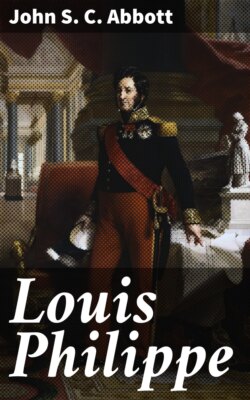Читать книгу Louis Philippe - John S. C. Abbott - Страница 15
На сайте Литреса книга снята с продажи.
1794–1798
ОглавлениеTable of Contents
Louis Philippe in Sweden.
The peninsula of Scandinavia can be explored at a very slight expense. The exiled prince, with his companions, travelled in the most unostentatious manner. He felt quite secure in his wanderings, as but few of the emigrants had penetrated those distant regions. From Copenhagen he passed to Elsineur, visiting all objects of historic interest. Crossing the Sound at Helsinbourg, he entered the hospitable realms of Sweden. After a brief tarry at Gottenburg, and ascending Lake Wener, he directed his steps towards Norway, remaining for a short period at Friedrichsthal, where, in 1718, the half-mad Charles XII., after perhaps the most stormy life through which a mortal ever passed, breathed his last.
Proceeding to Christiania, he was received, as an intelligent and affable traveller, with much distinction, though no one suspected his rank. Wherever he went the purity of his character impressed itself upon the community. M. Monod—subsequently a distinguished pastor of one of the Protestant churches in Paris—was then at Christiania. He fully appreciated the unusual virtues of his countryman, who, in every word and action, manifested the spirit of true Christianity.
"M. Monod has repeatedly since been heard to declare," write A. Laugier and Carpentier, "that the more the virtuous and instructive life of this traveller was examined, the more exalted and exemplary it appeared. What must have been his surprise when, subsequently, in his own country, he recognized in the young Frenchman of Christiania, so gentle and modest, a prince of the blood standing upon the very steps of the throne of France!"
His incognito.
For some time the duke remained at Christiania, receiving many kind attentions. On one occasion he dined with a numerous party at a banker's in the city. In the evening, at the close of the entertainment, as the guests were departing, the duke was startled and alarmed by hearing the son of the banker, in a loud and somewhat playful tone, call out, "The carriage of the Duke of Orleans." For a moment he was much embarrassed. But perceiving that neither the young man nor any of the company turned their eyes to him, he recovered his self-possession, and calmly inquired of the young man, "Why do you call for the carriage of the Duke of Orleans? What have you to do with him?"
"Nothing at all," he replied, with a smile; "but in a journey which we, not long ago, made to Paris, every evening, as we were coming out of the opera, we heard the people shouting on all sides, and with the greatest eagerness, 'La voiture de Monseigneur le Duc d'Orleans! les gens de son Altesse Royale?' I was almost stunned by the noise. At the moment it occurred to me to imitate them, instead of simply calling for the carriage."[D]
Journeying northward.
Continuing his journey to the north, the prince passed through Drontheim and Hamersfeldt, which latter place was then the most northern town in Europe. Some years after, when Louis Philippe had ascended the throne of France, he sent a clock to the church tower in Hamersfeldt, in graceful recognition of his hospitable reception there as a stranger.
NORTH CAPE.
Continuing along the coast of Norway, he reached the Gulf of Salten, and visited the world-renowned Maelstrom. Taking an Icelander, by the name of Holm, as his guide, he entered Lapland. Thus journeying, he, on the 24th of August, 1795, reached North Cape, the extreme northern point of Europe, within eighteen degrees of the North Pole. It is said that no Frenchman had ever before visited those distant and frigid regions. Here the duke remained for several weeks, enjoying the hospitality of the simple-hearted inhabitants—winning their confidence by his affability, and deeply interested in studying their manners and customs.
Court ball of King Gustavus.
Then, turning directly south, accompanied by several of the natives, he reached Tornev, on the extreme northern shore of the Gulf of Bothnia. Thence he traversed the eastern shores of the gulf for many weary leagues, to Abo, in Finland, where he embarked for the Aland Islands, and reached Stockholm the latter part of October. Here, notwithstanding all his endeavors to preserve his incognito, his curiosity to witness a grand court ball, given in honor of the birth-day of King Gustavus II., led to his recognition by the French envoy at that court, though he had adopted the precaution of entering the highest gallery in the ball-room.
The king, being informed of his presence, immediately dispatched a messenger to say that his majesty would be happy to see the duke. The kindest attentions were lavished upon him. From such attentions he deemed it prudent to escape, and speedily resumed his wanderings—searching out and carefully examining all objects of historical interest. Recrossing the Sound, he returned to Hamburg, by the way of Copenhagen and Lubeck. The Revolution was still running riot in France. The duke, having exhausted the resources at his disposal, found himself in truly an embarrassing situation.
